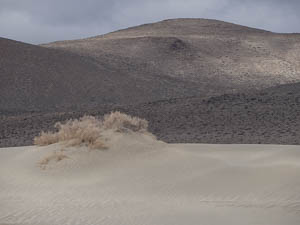Every Picture Is a Compromise
Lessons from the Also-rans
Most photography websites show the photographer's very best work. Wonderful. But that's not the full story of a creative life. If we want to learn, we'd better pay attention to the images that aren't "greatest hits" and see what lessons they have to offer. Every picture is a compromise — the sum of its parts, optical, technical, visual, emotional, and even cosmic – well, maybe not cosmic, but sometimes spiritual. Success on all fronts is rare. It's ok to learn from those that are not our best.
This is a series about my also-rans, some of which I've been able to improve at bit (i.e., "best effort"), none of which I would consider my best. With each there are lessons worth sharing, so I will.

Previous image | Next image |
Original digital capture

Contrast to the Rescue Week
It's amazing how many times an increase in contrast helps an image. Of course, it's possible to push this too far, but a nudge to increase contrast brings a presence to an image that otherwise would seem flat and dull. This week's examples are all from low contrast light that was boosted a bit in processing.
What I saw that I liked:
Layering and a touch of dappled sunlight. Yum.
What I don't like in the picture:
I suspected a storm was moving in, so I didn't have long to work here. As I stepped out of the truck, that beam of sunlight fell on the hill in the background. This was the only shot I got that offered any potential.
What I learned:
The light colored sand dune was easy to brighten to an almost-white. The contrast between the white of the dune and the dark hill behind it would have made an okay image, but that shaft of sunlight was the element that made this image a keeper. |
|


